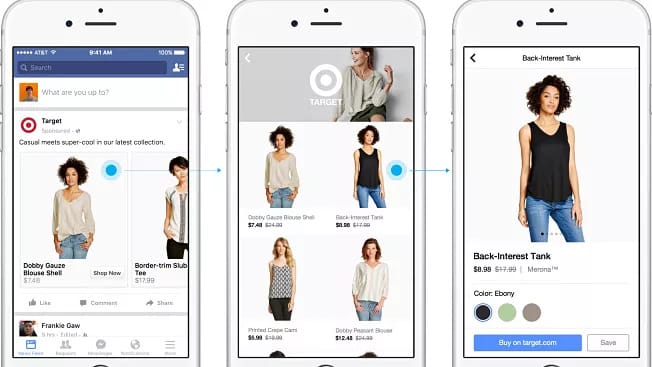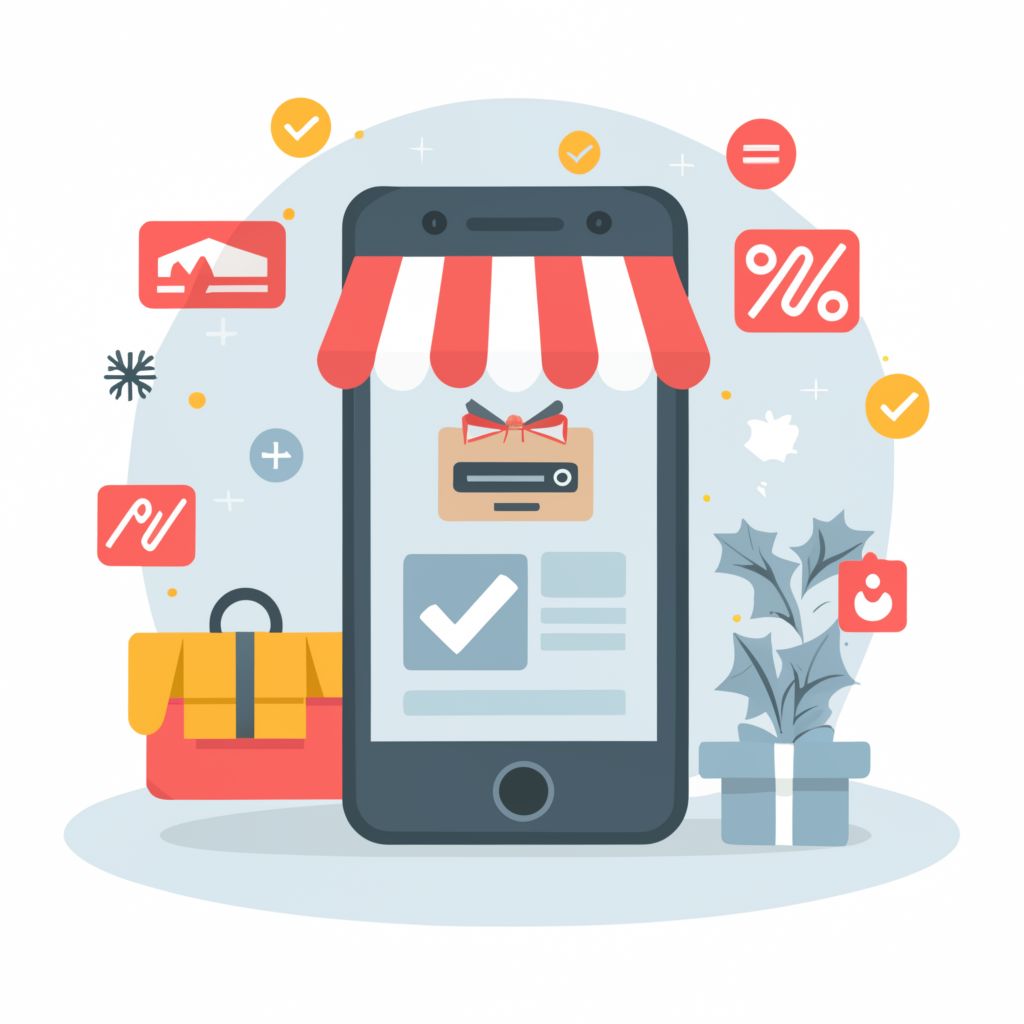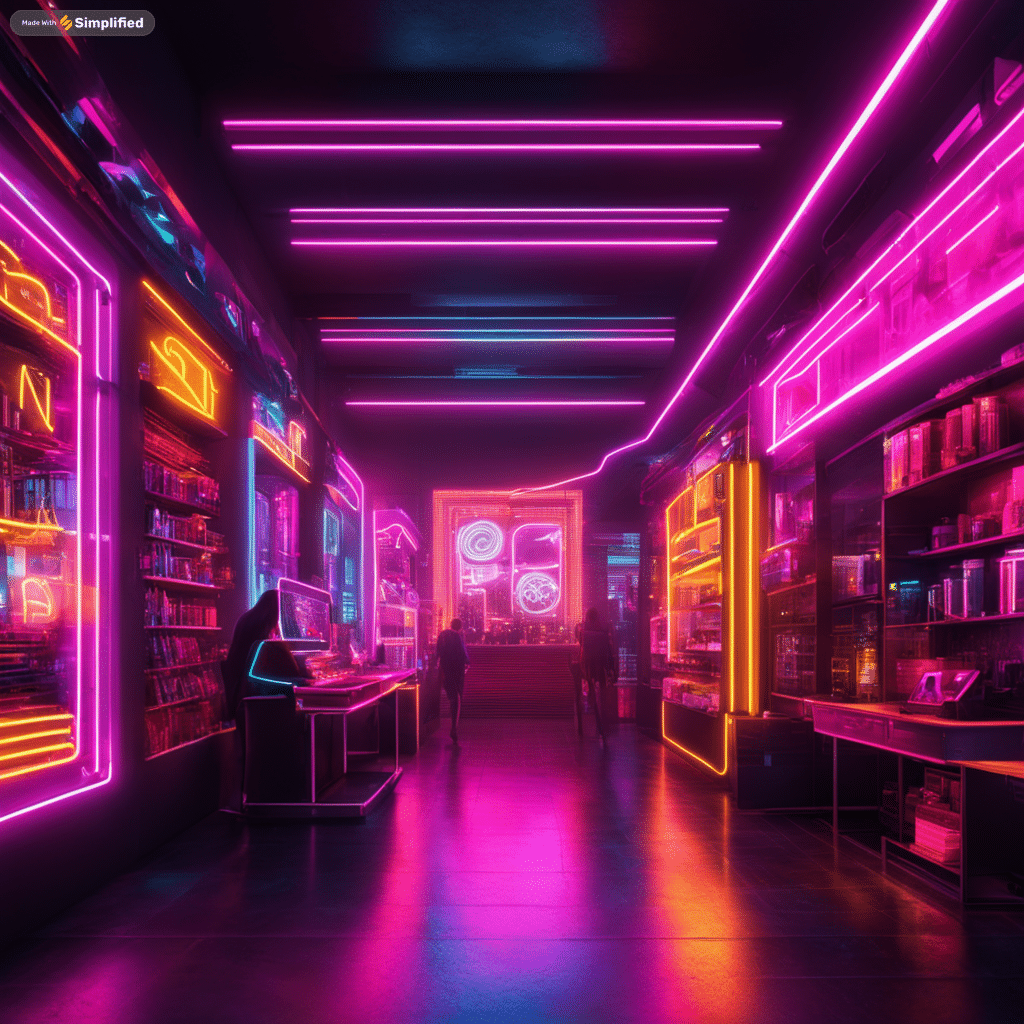It’s Digital Darwinism. Survival of the most adaptable to change.
And the changes in how people use technology to communicate, connect and discover are happening much faster today. Faster than businesses can naturally adapt. This carries significant implications:
It’s becoming much harder to win customers and much easier to lose them.
Giving customers better products, customizable options, and more channels or touchpoints will not be enough to differentiate and outperform peers. These factors will eventually become commodities.
There is one significant way to differentiate though:
Online shopping is undeniably convenient, sure. But it’s still an inherently impersonal channel as stated by 52% of people surveyed in the global “Truth About Shopping” study by McCann.
These shoppers are happy to adapt to new technologies, as they make things much faster and more convenient. At the same time, shoppers are expressing concern about these same trends. They value shopping as an experience and not just as a transaction. It’s not only about speed and convenience.

McCann – The Truth About Shopping – What consumers think about how online shopping will change
It will become essential for businesses to make online shopping more personal and create the feel of a local, offline store.
If you’re able to identify and invest in technology that doesn’t only make online shopping convenient but also adds the very human and personal touch amidst all that science and reliance on algorithms, you’ll be able to leave a memorable impression. The whole point is making technology not feel like technology.
1-Digital Advisors
75% of cross channel shoppers want the same quality of customer advice provided online as in-store.
Think about it, when you visit a store and don’t know what to choose, you’d expect an informed, friendly, upbeat salesperson to engage with you. S/he would ask about your needs and guide you through the purchase. You’d leave the store knowing you made the right decision.
Online shoppers want help, advice and nurturing throughout the decision-making process.
2 in 5 (39%) have left a business’ website because they were overwhelmed by too many options and made a purchase elsewhere.
The online experience is often, well let’s say, very transactional and rather uninspiring. You’re being presented with a large catalog of products, overwhelming options, restricted to using filters that are rarely intuitive to use, and there’s no help along the way.
Digital advisors aim to make up for the lack of personal advice in the online buyer’s journey. These interactive tools ask the same questions you might expect from a store associate. After analyzing the shopper’s needs, these solutions apply inference algorithms and machine learning to identify and suggest the most suitable products in real-time. They also provide assistance and tips to help consumers find the best product for their needs.
Example: Mizuno uses a digital advisor to help online customers track down the perfect pair of running shoes.
Do you too want to reduce customer frustration by creating more personalized shopping and choosing experiences for visitors? Here, you can start a free 30-day trial to build a digital advisor by using a comprehensive platform. (#shamelessplug #iknow)
2-AI, Chatbots & Conversational Commerce
Gartner research suggests that by 2020 virtual agents will participate in a majority of commercial interactions.
Even in its most indirect and impersonal form, commerce is a series of ongoing conversations: understanding what the customer wants, answering questions, making an offer, and negotiating the price. Technology has automated most of these interactions, but the key elements of shopping are still conversations.
Until recently, e-commerce leaders have been looking for ways to get direct, natural and personal conversations into online shopping. It was an important element that was still missing from the online shopping experience.
…and along came Chatbot with its talkative cousin, Voice-enabled assistant.
As paradox as it may sound, bots are poised to recapture that lost intimacy and rekindle the conversations we are used from offline shopping interactions.
We are still in the nascent phase of this revolution and there is some awkward tension surrounding conversational commerce. Will it really take off? Will customer embrace this new form of conversations in online shopping? Will it be able to handle complex cases and actually convert?
“I want a green top in a shade of green that’s rather bluish and fits like the top I bought 2 years ago and goes well with these slacks”
It all remains to be seen, as we are far away from human-like natural language processing. Engaging shoppers in truly conversational conversation is still a distant reality.
However, one thing I’ve learnt in the past is that whenever companies and brainy people heavily invest into something in such a short period of time, it’s a sign that it’s a technology worth paying attention to.
Example: Amazon recently introduced Echo Look, with a built-in camera, which allows you to not only order a top but ask Alexa how you look in it too. As Amazon is trying to build up their fashion business, this is a way to create better profiles of shoppers. At the end of the day, Amazon want us to shop more on amazon.com. Echo Look helps Amazon understand which clothes you’re already wearing and which clothes you’re more inclined to buy.
3-Real-Time Customization
Research shows that the majority of online shoppers are willing to share personal information with a favorite retailer in exchange for personalized messages and offers.
This give-and-take relationship is an important factor in driving loyalty in an online world.
Imagine walking into a store where the salespeople know your name, what you like and recommend items accordingly. In most cases, it will make you feel special and valued.
Online shopping needs to become more focused on individual shoppers and their needs to create an experience that feels much more like an offline interaction.
Real-Time Customization is a way to provide a different, customized experience to every customer, during every visit. It uses different parameters like purchasing habits, preferences, demographics, and geographic location to personalize messages on the fly.
Getting it right requires quite a bit of data-mining and machine-learning to understand preferences and make accurate inferences based on similar customers’ choices. There are some interesting examples of companies that are successfully using this approach as an opportunity to customize retail choices, create more positive shopping experiences and maximize sales.
Example: L’Oréal Paris has developed five diagnostic tools for skincare, cosmetics (face and eyes), haircare, and hair color. The tools allow consumers to “try on” different products and looks in real time. The data that is collected during each session is used to create ultra-personalized experiences, communications, interactions and offers, which have a major influence on purchasing decisions.

In 2015, Shop Direct, a UK-based, multi-brand online retailer, launched fully personalized home pages. The site constantly learns which content and configuration works best for each visitor and renders the site accordingly, in real time. Every logged-in customer is greeted by name and sees a custom selection of products and offers based on their interests.
4-Predictive Analytics and Curation
65% of customers are frustrated by incoherent offers and experiences across different channels.
An advantage of offline shopping is that it allows you to understand the customer and their situation right now to suggest products that are relevant right now.
The online experience, however, often feels as if it is stuck in the past and looks backward. Suggestions and ads are based on a narrow view of the customer in the rear-view mirror.
Different data points from different sources that may be related and could help optimize recommendations are not being connected.
For example, my clothing store may know which sweaters and patterns I like but has no idea which music I download. The online travel booking site knows about my upcoming vacation plans but has no clue that I just bought a ticket for a concert out of town.
This isolated customer view leads to lottery-like ads and recommendations that reflect a customer’s past needs, searches or purchases. In fact, there is still quite a bit of guesswork involved in recommender and advertising algorithms.
Let me present you with – Exhibit A:

Predictive analytics and machine learning can take product recommendations to the next level by creating completely curated, highly personalized experiences. Blending various data points to create a single view of what customers are doing allows retailers to capture “true intent” and “actual, current interest”. It will provide them with a deeper contextual view of the customer, which will help them anticipate a customer’s future actions and needs.
The breakthrough in this field will not happen until 2026 as sophisticated models to help retailers make sense of all the data are not available yet. It’s still a “specialist tool” that requires frequent human intervention and supervision.
To add a word of caution: This method will not appeal to all consumers, who may consider it intrusive to their privacy and don’t want to outsource their shopping list to an algorithm — unless it gives them control to decide what’s being collected and provides a clear benefit to the customer who is trying to reach a purchasing decision.
Example: When ordering food, a food delivery app would integrate with the customer’s grocery store and chemist. This would make sure that food recommendations considered their palate and potential allergies, leading to messages like “You’re allergic to peanuts and your order can have traces of peanuts. Do you wish to continue?”
5-Social Commerce
63% of Millennials typically shop with friends, family or significant others and won’t make a purchase of which their friends disapprove.
Here’s a quick test for you: What happens if you tell the people around you
“I’m going to Starbucks!”
Do they hand you a list of lattes to bring or do they get ready to go with you?
The latter group is most likely of the social shopper breed.
Social shoppers enjoy shopping as a social experience and see it as a chance to bond with friends and family. For them, shopping is not buying. Socialization has always been an important function of shopping after all.
People spend more time and money when shopping with friends. Studies have also shown that even frugal people who shop with friends, spend more than when they go alone.
It’s no wonder that companies have set their sights on replicating this experience online. They created a category that is known as social shopping.
Amazon and eBay have integrated social features and social shopping sites like Polyvore, Fab, Wanelo, Open Sky, Fancy, and Mod Cloth allow users to receive recommendations and share collections of items with like-minded buyers.
But Social commerce hasn’t really caught on …not just yet.
Social commerce combines social media and e-commerce. Pinterest, Instagram, Twitter, Snapchat, and Facebook have all integrated e-commerce features at one point, aiming to find new ways to monetize their services. However, most of them have killed those efforts as they didn’t live up to their potential.
There are two main reasons.
Firstly, users use social networks to be social, not to purchase. Secondly, users are reluctant to purchase things on social media due to security concerns. According to a Deloitte study, 47% say that they have made a purchase after seeing a product in their social media feed, but only 1 in 5 has actually made a purchase through the social platform.
Social networks aren’t giving up on social commerce though. Social media offers a huge potential and has proven to be an ideal channel to generate awareness and drive traffic. 81% say that posts from their friends directly influenced their purchasing decision.
These platforms are experimenting, rolling out new features, and investing into improving the experience. Don’t expect this to go away.
Example: If you are a Facebook user, you may have noticed that Facebook introduced shoppable Collection ads. These are product ads that let retailers showcase multi-product imagery within the news feed. It also shows you who of your friends likes the brand to increase your trust in the brand and engagement with the ad.

Image source: Adweek
6-3D Experiences and AR
62% of people don’t shop online because they can’t see, touch, feel and try out items.
While shopping online is becoming faster and more convenient, the missing sensory experience is still one of the top 5 hurdles that keeps shoppers from buying items online.
You simply can’t feel pixel and gauging the quality, size, ergonomics, and fit of a product is easier done in person.
2D product images will not be enough as online customers will want to understand more about a product before committing to purchase, which is especially true for apparel, furniture and home décor products.
3D technology is picking up. It allows retailers to replicate the physical interaction of examining products from every single angle.
Augmented and virtual reality isn’t mainstream yet, simply because nobody is buying products with their VR headsets. However, it’s slowly but surely being integrated into shopping experiences worldwide. Once it will become easier for retailers and brands to transform their 2D product images into 3D representations, this will become mainstream in online shopping too.
It will solve the dilemma with product visualization and will make it possible for online shoppers to see virtual products in their actual environment.
Example: The Australian start-up Shoes of Prey is a pioneer in this area and offers 360-degree views for all their products. It allows shoppers to design, customize and order their own personalized pairs of shoes on a web-based 3D design platform. Shoes of Prey has an 18% return rate (mostly sent in for a remake not a refund), while most e-commerce apparel players struggle with an average 40% return rate.
7-Same Day or Drone Delivery
49% of consumers say they choose stores over the web because they want to take items home immediately.
When you go to a store to buy something, you’ll want to walk away with that item the same day.
In the early days of e-commerce, people were willing to put up with waiting for weeks for their order to arrive. The prospect of one-day delivery has changed that. In fact, most consumers have been trained to expect fast delivery and take this particular benefit for granted.
Instant gratification is simply very seductive; it’s a power that no one should not underestimate.
Now, businesses are looking into providing the same experiences online. As delivery speed is one of the key factors determining whether a customer chooses to buy your product online, same-day and drone delivery is becoming more appealing.
Consumer research shows that online shoppers welcome this option if it helps to speed up delivery. 33% of consumers are interested in having their e-commerce purchases delivered by drone.
Looking ahead, the automation of delivery might be your best choice to differentiation.
While the potential of drones enthuses consumers, retailers, and manufacturers, authorities in different countries are less excited. There are still too many kinks to work out. Security related issues, theft and damage, last-mile delivery expectations and delivery in hard to reach areas (e.g. cities) all are still unanswered questions. Then there is the question how people will respond to seeing drones buzzing up in the sky.
It will be interesting to see how this technology evolves. Certainly, one to watch.
Example: Retailers, like Amazon, Target, and Wal-Mart, are aggressively pursuing drone delivery. The pioneer of this idea was Google Express, which was followed by Amazon Prime Air.
Bringing the Offline Experience Online
Bringing the offline experience online is crucial for companies that want to differentiate their business in the future. The good news is that there could be countless ways to do this. As consumer demand and consumer expectations change, the worst thing you can do is simply stick to what’s worked for you in the past.
All things considered, retailers that fail to tap into new digital tools could fall behind the next wave of innovative new retailers. Digital transformation is a standard for the future, and companies will need to invest in digital experiences to improve results for everyone involved.
However, since every shopper and every business is different, your digital transformation efforts shouldn’t be informed by trends, but social science, and the understanding of how digital solutions can help your customers and your business. Technology can and should be seen as an enabler to human-centered transformation in the online world.




